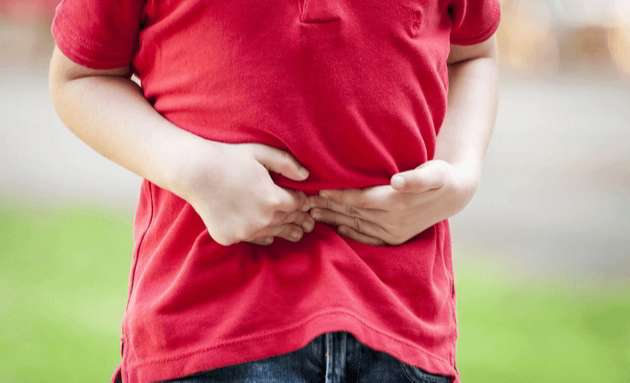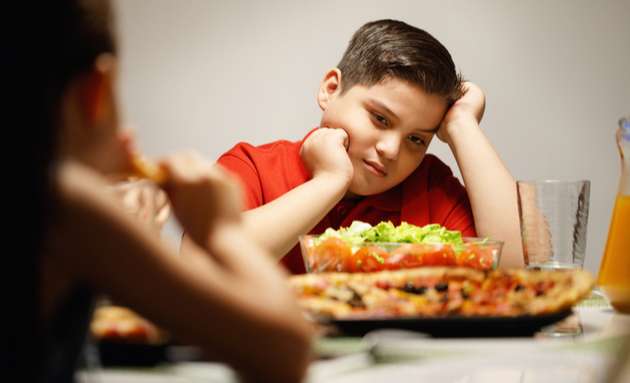Obesity: How To Prevent Children From Being Obese

In 2016, 41 million children across the world, under the age of 5 were found to be overweight or obese. Over 340 million children and adolescents aged 5-19 years were found to have a higher than normal body weight.
According to the World Health Organisation that conducted this study, one of the key facts that emerged was that obesity was preventable.
What is Childhood Obesity?

Obesity is a condition where there is an excess accumulation of fat in the body. The impact of obesity in children and teens is different from adults because their bodies are still developing, so their organs react differently to excess fat, in comparison to adults whose organs are fully developed.
Body mass index (BMI) is a simple index of weight-for-height that is commonly used to classify overweight and obesity in adults. The WHO guidelines state that any adult with a BMI greater than or equal to 25 is overweight, while a BMI greater than or equal to 30 is considered obese. However, unlike adults, in children, their gender and age is needed to accurately determine the BMI, as the amount of fat differs in boys and girls as they grow.
According to doctors, parents often miss the early signs of obesity in children, mistaking being overweight as chubby and cute. If childhood obesity is not controlled, these children are more likely to grow up as obese adults with various health complications.
How is Childhood Obesity Caused?
Children can develop obesity due to a host of factors like:
-
Hereditary Factors
Obesity is known to run in families; children of overweight or obese parents are more likely to become obese. -
Lifestyle
Lack of exercise and a sedentary lifestyle play a significant role in the onset of obesity. Children today are surrounded by gadgets which leave little time for physical activities. A lack of playing spaces in urban areas is another cause for children not being active. -
Diet
Snacks and junk food that are rich in calories and low on nutrients are widely marketed and easily available. With an increase in spending power, parents can afford to buy these products far more frequently. Couple unhealthy eating with a lack of physical activity and children end up burning lesser calories than they should. -
Hormonal Disorders
In a small percentage of cases, obesity can be a result of hormonal, genetic or neurological disorders. -
Gender

Boys and girls develop differently so the impact of excess fat is also felt differently between them.
-
Girls
In obese girls, doctors often notice early breast development, before the age of 8 years. Some may start menstruating as early as 10 years. With the onset of puberty, bones stop growing and a girl’s growth spurt slows down/ stops as well. Early puberty also has a link to the development of breast cancer.
Obese girls are at risk of developing Polycystic Ovary Syndrome, a hormonal disorder in women, affecting the ovaries. Menstrual abnormalities increase as well. Childhood obesity can also be a risk factor for breast, ovarian, and endometrial cancers. -
Boys
Obese boys have a higher susceptibility to prostate and colon cancer as adults.
They also experience late puberty. Boys are more likely to suffer from gynecomastia, defined as enlarged male breasts. An obese child may also be a victim of:
- Anxiety and depression
- Bullying
- Low self-esteem
-
The Long-Term Impact of Obesity
Childhood obesity can have several negative repercussions in the long run. Children who are obese or overweight are more likely to develop several health complications when they reach their teens and adulthood. Some of these include:
- Insulin resistance leading to Type 2 diabetes.
- High blood pressure and high cholesterol, which increases the risk of cardiovascular diseases.
- Certain types of cancer like breast, ovarian, and endometrial cancers in women and prostate and colon cancer in men.
- Sleep Apnea, a sleep disorder where breathing repeatedly stops and starts during sleep cycles. Sleep Apnoea is known to lead to hypertension and cardiovascular diseases.
- Musculoskeletal diseases like osteoarthritis which affect a person’s body movements.
- Fatty liver disease, where excess fat accumulates in the liver causing cirrhosis (scarring of the liver).
Measuring Obesity

“In children, it is difficult to understand whether they have crossed the line from being chubby to obese as their body fat changes with age. However, there are certain ways that can help a parent understand whether their child is obese or has a normal body weight,” says Dr Ganesh Jevalikar - Pediatrics, Medanta.
Here are some tools you can use to check if your child is obese.
-
BMI (Body Mass Index)
A BMI-for-age calculator, which is easily available online, can be used to measure the body mass index of children or teens (2-19 years old). In India, doctors follow the Indian Academy of Paediatrics (IAP) Growth Charts to determine the status of a child’s overall health. -
Waist Circumference
Waist circumference can help determine whether a child is of a healthy weight or not. It is also an indicator of health risks associated with central obesity or weight around the abdomen. Excess amount of fat located in the waist area of a child could mean that he/she has an increased risk for diseases like Type 2 diabetes, high blood pressure, and heart disease. -
Habits of Obesity
There are some habits typical to people that suffer from obesity that parents should be aware of. If the answers are yes to most of the questions below then you child is likely to become overweight or obese in the long run.
- Does the child live a sedentary lifestyle?
- Is he/she inactive?
- Does he/she eat high calorie and cholesterol-rich food regularly?
Can Obesity Be Treated?
Obesity is often treated with physical exercise and diet control measures. However, if caused by a hormonal disorder, doctors prescribe medication to treat the disorder.
Obesity is Preventable

Obesity can be prevented through a combination of diet, physical activity and lifestyle changes.
Parents of school-going children and adolescents are advised to:
- Decrease the amount of fat and sugar-rich food in their child’s diet.
- Encourage the child to eat fruits and vegetables. These are full of nutrients and make for a healthy snack.
- Make regular physical activity for at least an hour a day, mandatory.
- Teach children to chew the food properly for better digestion.
- Try to make the child eat dinner with the family so that he/she learns healthy eating from the parents.
- Avoid switching on the TV during meal-times as this often leads to mindless eating, where the child will not realise how much quantity of food is being eaten.
- Keep a gap of approximately 2-3 hours between dinner and sleep which helps in better sleep and digestion
If parents think that their child is turning obese, they should consult a paediatrician or a paediatric endocrinologist, who specializes in hormonal disorders. However, managing obesity in children is teamwork comprising the child, the family, the paediatric endocrinologist/ paediatrician, dietician and psychologist.
The WHO goes on to say that if childhood obesity continues to grow, there will be 70 million obese and overweight infants and young children by 2025, globally. But an effective approach and intervention from parents can help children change their lifestyle and avoid gaining excess weight.


